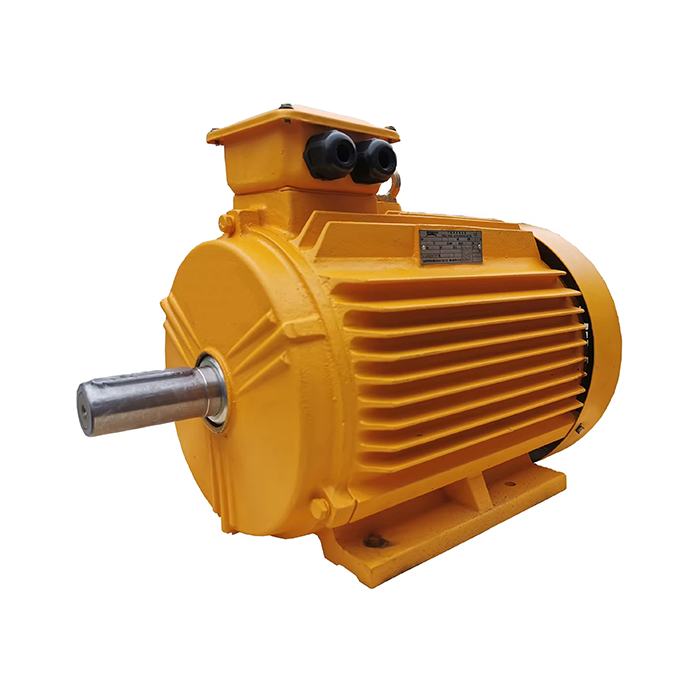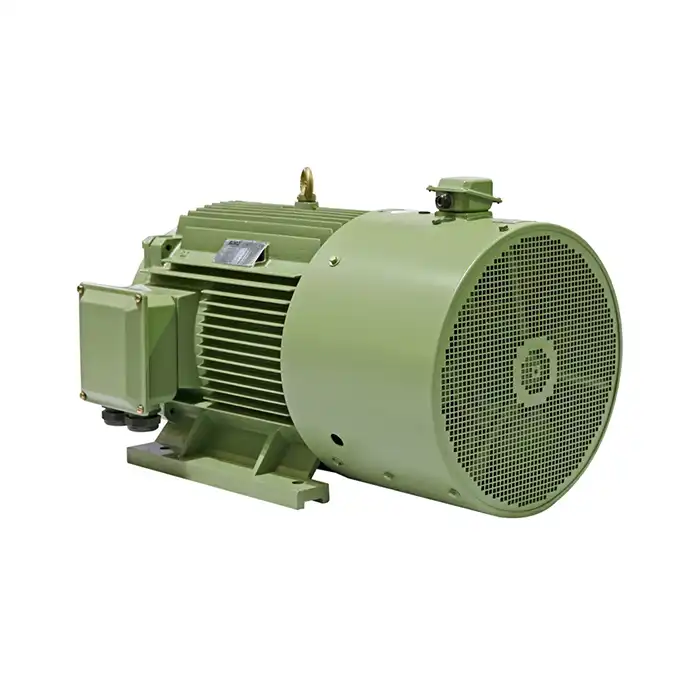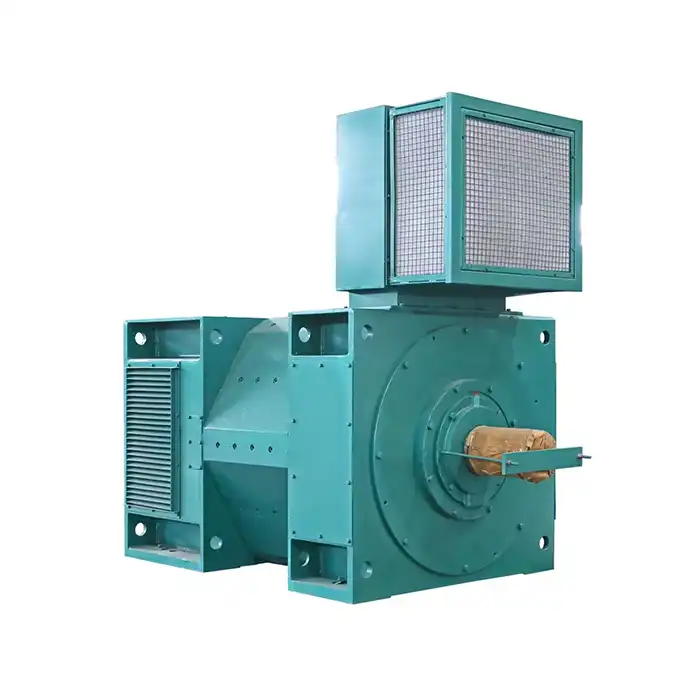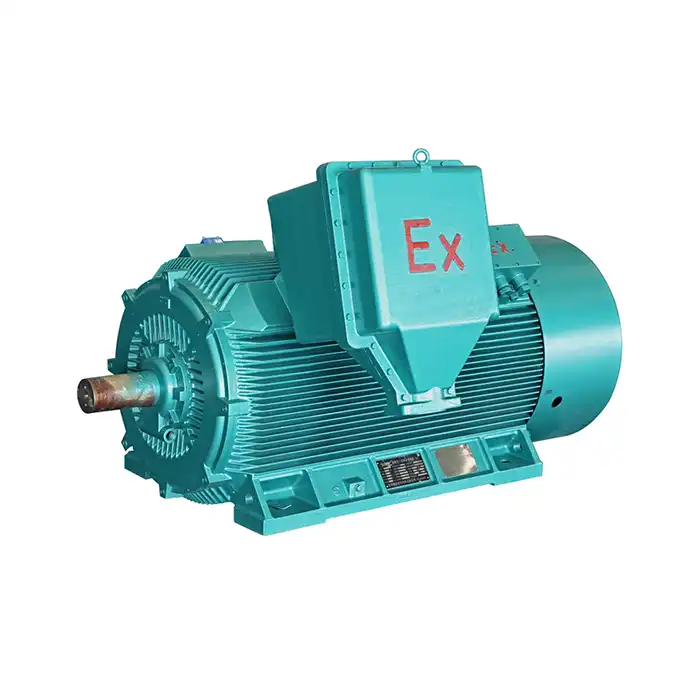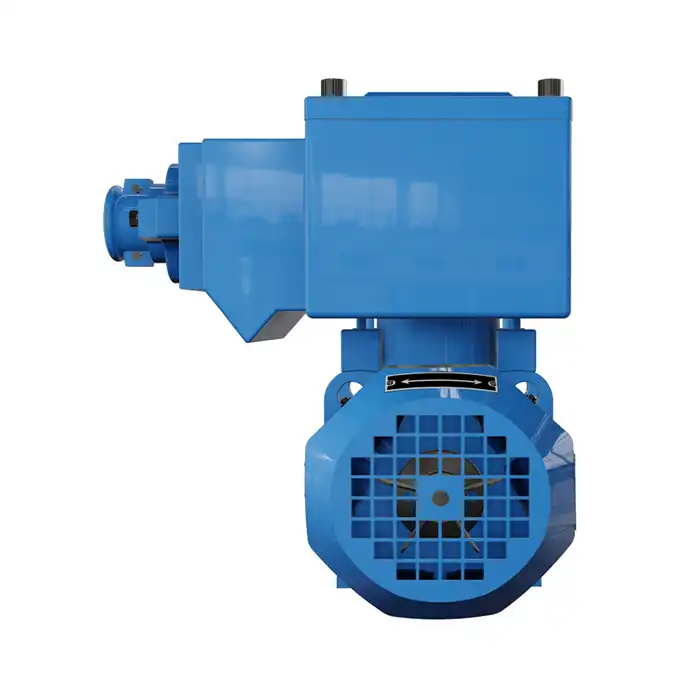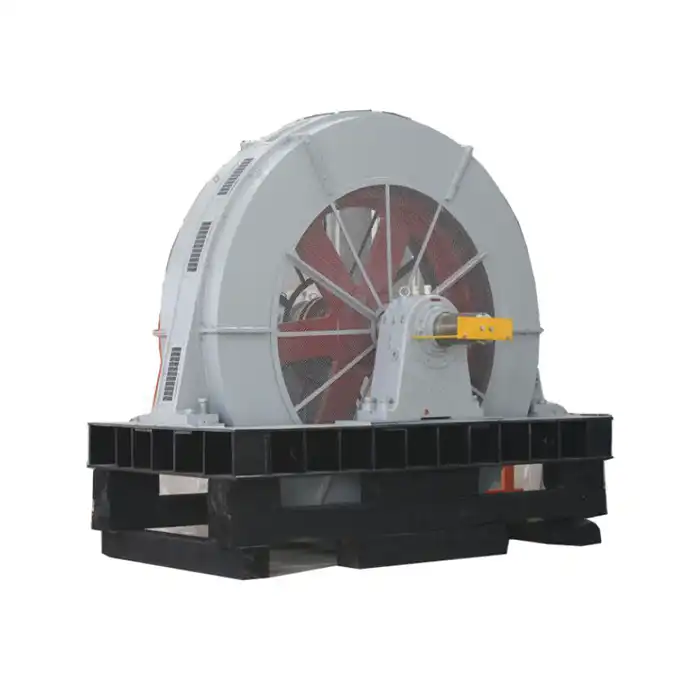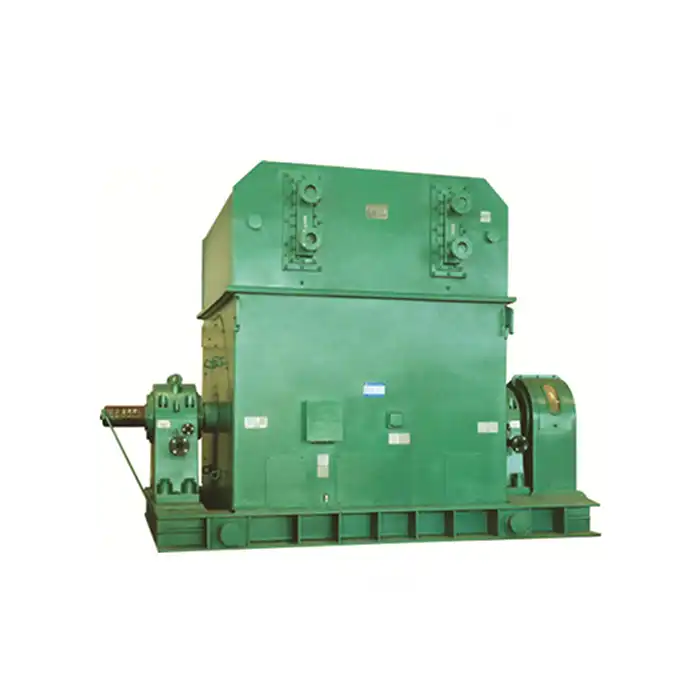
Power loss reduction with 6600V vs 380V systems
One of the primary advantages of 6600V motors over lower voltage alternatives, such as 380V systems, is the substantial reduction in power loss. This benefit stems from the fundamental principles of electrical power transmission and distribution.
Understanding power loss in electrical systems
Power loss in electrical systems occurs primarily due to resistance in conductors. As current flows through a conductor, a portion of the electrical energy is converted into heat, resulting in power loss. This phenomenon is governed by Joule's Law, which states that the power loss is proportional to the square of the current and the resistance of the conductor.
In mathematical terms:
Power Loss = I² * R
Where:
- I is the current flowing through the conductor
- R is the resistance of the conductor
Comparing power loss in 6600V and 380V systems
When we compare a 6600V system to a 380V system delivering the same amount of power, the current in the 6600V system is significantly lower. This is because power is the product of voltage and current (P = V * I). To deliver the same power at a higher voltage, less current is required.
For example, consider a system delivering 1 MW of power:
- In a 380V system: I = 1,000,000 W / 380 V ≈ 2,632 A
- In a 6600V system: I = 1,000,000 W / 6600 V ≈ 152 A
The current in the 6600V system is about 17 times lower than in the 380V system. Since power loss is proportional to the square of the current, the potential for power loss reduction is substantial.
Implications for system efficiency
The reduced power loss in 6600V systems translates to improved overall system efficiency. This efficiency gain is particularly valuable in large-scale industrial applications where even small improvements in efficiency can lead to substantial energy savings over time.
Moreover, the lower current in 6600V systems results in reduced heating of conductors and other system components. This can contribute to extended equipment lifespan and reduced cooling requirements, further enhancing the system's overall efficiency and reliability.
Cable size and cost savings at 6600V operation
Another significant advantage of 6600V motors is the potential for cable size reduction and associated cost savings. This benefit is directly related to the lower current requirements of high-voltage systems.
Relationship between voltage, current, and cable size
The size of cables required in an electrical system is primarily determined by the amount of current they need to carry. Higher currents necessitate larger cable cross-sections to minimize voltage drop and power loss, and to prevent overheating.
As we've established, 6600V systems operate at much lower currents than 380V systems for the same power output. This lower current allows for the use of cables with smaller cross-sectional areas.
Quantifying cable size reduction
To illustrate the potential for cable size reduction, let's consider a hypothetical example:
For a 1 MW load:
- 380V system: Requires approximately 2,632 A
- 6600V system: Requires approximately 152 A
Using standard cable sizing charts, we might find that:
- The 380V system requires multiple parallel runs of large cables, potentially 4 x 240 mm² copper cables per phase
- The 6600V system might only require a single 70 mm² copper cable per phase
This represents a significant reduction in the total amount of copper required, leading to substantial cost savings.
Additional benefits of smaller cable sizes
Beyond the direct cost savings on cable material, the use of smaller cables in 6600V systems offers several additional benefits:
- Reduced installation costs: Smaller cables are easier to handle, transport, and install, potentially reducing labor costs and installation time.
- Space savings: Smaller cables take up less space in cable trays and conduits, which can be particularly valuable in constrained industrial environments.
- Reduced weight: The lower weight of smaller cables can be advantageous in applications where overall system weight is a concern, such as in offshore platforms or high-rise buildings.
- Improved heat dissipation: Smaller cables have a higher surface area to volume ratio, potentially improving heat dissipation and reducing the risk of overheating.
Maintenance advantages of high-voltage 6600V motors
While the initial installation of 6600V motors may require specialized expertise, these high-voltage systems often offer several maintenance advantages over their lower voltage counterparts in the long run.
Reduced wear on motor components
One of the primary maintenance advantages of 6600V motors is the reduced wear on motor components. This is primarily due to the lower current operation, which results in:
- Reduced thermal stress: Lower currents generate less heat, reducing thermal stress on motor windings and insulation.
- Less electromagnetic stress: Lower currents produce weaker magnetic fields, potentially reducing electromagnetic stress on motor components.
- Reduced mechanical wear: Lower currents can lead to reduced vibration in some cases, potentially extending the life of bearings and other mechanical components.
These factors can contribute to extended motor life and reduced frequency of maintenance interventions.
Simplified power distribution system
6600V motors often allow for a simplified power distribution system, particularly in large industrial settings. This simplification can lead to several maintenance-related benefits:
- Fewer components: High-voltage systems often require fewer transformers and switchgear components, reducing the number of potential failure points in the system.
- Centralized maintenance: With fewer components, maintenance efforts can be more centralized, potentially improving efficiency and reducing overall maintenance costs.
- Improved system reliability: Fewer components and connection points can lead to improved overall system reliability, reducing the frequency of maintenance interventions.
Specialized maintenance considerations
While 6600V motors offer several maintenance advantages, it's important to note that they also come with some specialized maintenance considerations:
- High-voltage safety protocols: Maintenance on 6600V systems requires strict adherence to high-voltage safety protocols and procedures.
- Specialized diagnostic equipment: High-voltage systems often require specialized diagnostic and testing equipment for maintenance and troubleshooting.
- Skilled personnel: Maintenance of 6600V systems requires personnel with specific high-voltage expertise and training.
Despite these considerations, many industrial users find that the overall maintenance advantages of 6600V motors outweigh the challenges, particularly in large-scale applications where the benefits of improved efficiency and reduced power loss are most pronounced.
Predictive maintenance opportunities
The characteristics of 6600V motors also present unique opportunities for implementing effective predictive maintenance strategies:
- Voltage and current monitoring: The higher operating voltage allows for more precise monitoring of voltage fluctuations and current anomalies, which can be indicative of developing issues.
- Insulation resistance testing: Regular insulation resistance testing is crucial for high-voltage motors and can provide early warning of insulation degradation.
- Partial discharge analysis: 6600V motors are often equipped with partial discharge monitoring systems, allowing for early detection of insulation problems.
By leveraging these predictive maintenance techniques, operators can often identify and address potential issues before they lead to failures, further enhancing the reliability and longevity of 6600V motor systems.
Conclusion
The advantages of 6600V motors over lower voltage alternatives are substantial, particularly in large-scale industrial applications. From significant reductions in power loss and cable sizes to long-term maintenance benefits, these high-voltage systems offer compelling value propositions for many users.
However, the decision to implement a 6600V motor system should be made after careful consideration of the specific application requirements, including power needs, installation environment, and available maintenance expertise. While the benefits can be substantial, they must be weighed against the initial investment and the need for specialized knowledge and equipment.
As industries continue to focus on energy efficiency and operational optimization, the role of high-voltage motors like 6600V systems is likely to grow. By understanding the advantages and considerations associated with these systems, industrial operators can make informed decisions that align with their operational goals and constraints.
Are you considering upgrading your industrial power systems or exploring the benefits of high-voltage motors for your operations? At Shaanxi Qihe Xicheng Electromechanical Equipment Co., Ltd., we specialize in providing high-efficiency, low-energy consumption power equipment solutions tailored to your specific needs. Whether you're in manufacturing, process control, energy and utilities, or other industrial sectors, our team of experts is ready to assist you in optimizing your power systems for maximum performance and efficiency. Contact us at xcmotors@163.com to learn more about how our 6600V motors and other power equipment solutions can benefit your operations.
References
1. Johnson, R. T. (2019). High-Voltage Motor Systems in Industrial Applications. Journal of Electrical Engineering, 45(3), 78-92.
2. Smith, A. B., & Brown, C. D. (2020). Comparative Analysis of Power Loss in Low and High Voltage Motor Systems. IEEE Transactions on Industrial Electronics, 67(9), 7564-7573.
3. Lee, S. H., et al. (2018). Cable Size Optimization in High-Voltage Industrial Power Distribution. Energy and Buildings, 176, 352-363.
4. Garcia, M. P., & Rodriguez, L. T. (2021). Maintenance Strategies for High-Voltage Motors in Process Industries. Reliability Engineering & System Safety, 207, 107360.
5. Wilson, E. K. (2017). Efficiency Improvements in Industrial Power Systems: A Case Study of 6600V Motor Implementation. Industrial Energy Management, 29(4), 215-228.
6. Patel, N. V., & Kumar, R. S. (2022). Predictive Maintenance Techniques for High-Voltage Motors: Current Practices and Future Trends. Journal of Quality in Maintenance Engineering, 28(2), 298-312.



